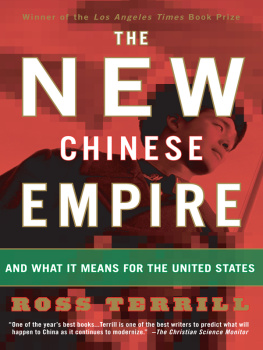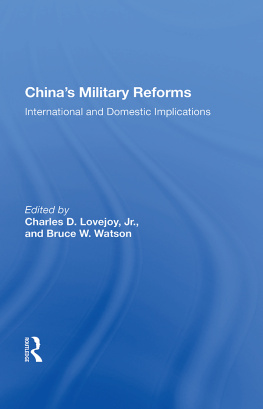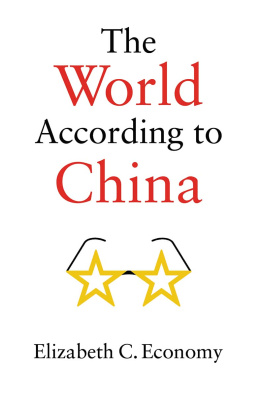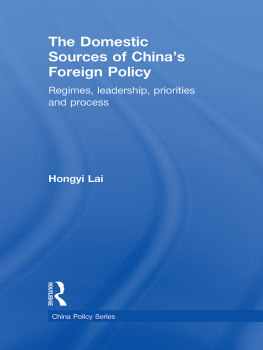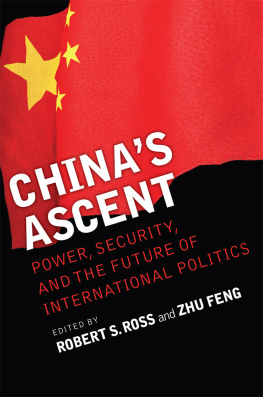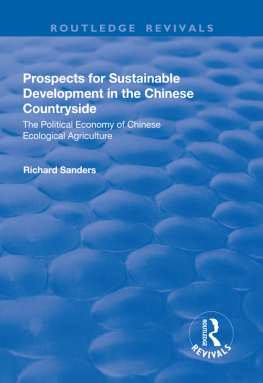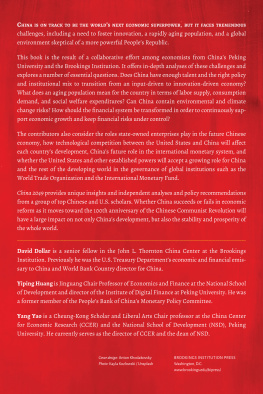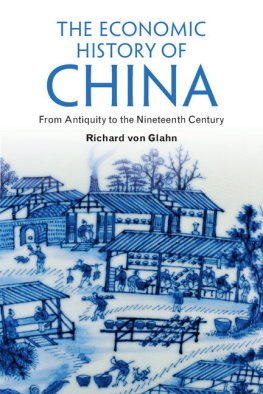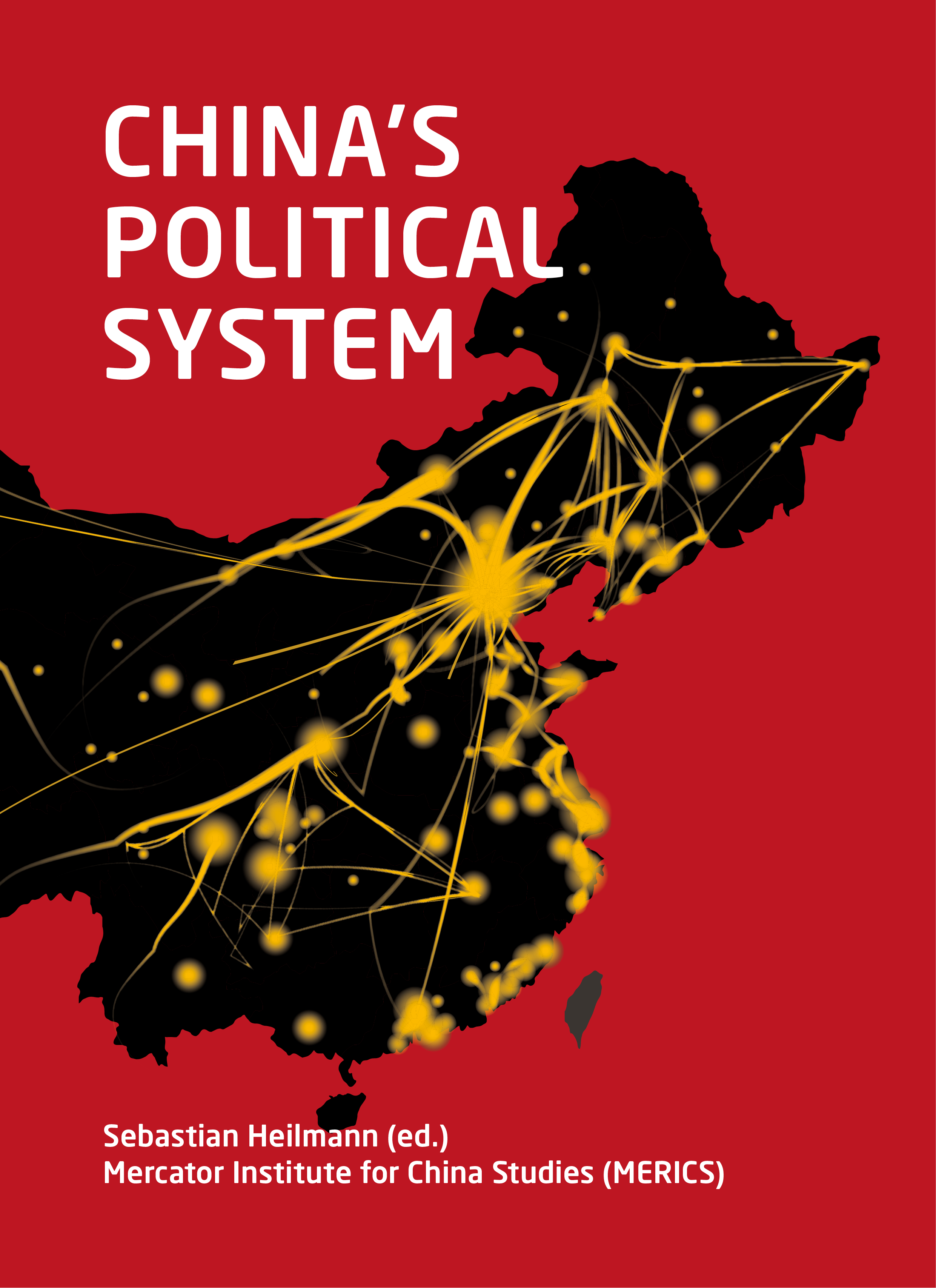Table 1.1.A | Important events in the history of the PRC, 194979 |
Table 1.1.B | Formative developments and traumatic experiences in Chinas recent history |
Table 1.1.C | Notions of political order and organizational patterns: Continuities and novel approaches (selected examples) |
Table 1.5 | Analytical perspectives in the study of Chinese politics |
Table 2.1.A | The Chinese variant of socialism: Basic organizational features |
Table 2.1.B | The Chinese variant of socialism: Fundamental ideological features |
Table 2.1.C | Sino-Marxist methodology and its effects in political practice |
Table 2.1.D | Definitions of the principal contradiction and the CCP work focus |
Table 2.1.E | The two centenary goals |
Table 2.1.F | Core socialist values, as propagated by the CCP |
Table 2.3.A | Membership structure of the CCP, 200513 |
Table 2.3.B | National Communist Party Congresses and leading CCP bodies |
Table 2.3.C | The internal structure at the party center, 2014 |
Table 2.4.A | The central government of the PRC, 2015 |
Table 2.4.B | Coordinating bodies of the State Council ( ), under the leadership of the premier, 2014 |
Table 2.5.A | Policy-making authority granted to regional governments |
Table 2.5.B | How a provincial government is structured (based on the example of Jiangsu province, 2015) |
Table 2.8 | Chinas government debt, 2013 |
Table 2.9.A | State and party cadres in the PRC, 1997 |
Table 2.9.B | Hierarchy of leading party cadres, 198098 |
Table 2.9.C | Public-sector employees, 19952008 |
Table 2.9.D | Popularity of the civil service: Applicants for open civil-service jobs, 200414 |
Table 2.10.A | Regulations of state and party organs |
Table 2.10.B | National Peoples Congresses, 19542013 |
Table 2.10.C | Delegates to the National Peoples Congress, 19542018 (percentages) |
Table 2.10.D | Selected voting results in the National Peoples Congress, 19952015 |
Table 2.10.E | Membership of the United Front parties, 2013 |
Table 2.11 | Number of prisoners, 201314 |
Table 2.12 | Chinese military expenditures: Official statistics and unofficial estimates, 19942014 |
Table 3.1.A | Stereotypical representations of Chinas leadership in Western media |
Table 3.1.B | Events that may trigger a crisis mode |
Table 3.1.C | Characteristics of the normal and crisis modes in Chinese politics |
Table 3.2 | Leadership generations within the PRC |
Table 3.3 | Responsibilities within central party and government offices, 2014 |
Table 3.6 | Crucial factors in leadership and succession conflicts |
Table 3.7 | Tensions between formal and informal rules in Chinese politics |
Table 4.1 | Chinas economic growth and reform coalitions |
Table 4.3 | Preconditions for the introduction of market-oriented reforms in China |
Table 4.4.A | Distinctive policy features of Chinese reform practices, 197898 |
Table 4.4.B | Developmental phases and reform measures since 1979 |
Table 4.5.A | Basic types of Chinese companies under state and private control, 2014 |
Table 4.5.B | State mechanisms for influencing and intervening in business |
Table 4.7 | Chinas foreign trade, 19802014 |
Table 4.8 | Basic kinds of political corruption in the PRC |
Table 4.9 | Regional economic disparities, 2014 |
Table 5.1 | Population growth in the PRC, 19532014 |
Table 5.3.A | Rural household incomes and urbanrural income gaps, 19902014 |
Table 5.3.B | Top destinations of Chinese migrant workers, 2014 |
Table 5.4.A | Annual income and consumption by region, 2013 |
Table 5.4.B | Social classes based on opportunities for social participation |
Table 5.4.C | Chinas super rich and their wealth, 19992015 |
Table 5.4.D | Per capita annual cash living expenditures of urban households, 2012 |
Table 5.5.A | The development of social organizations in the PRC, 200414 |
Table 5.5.B | Selected associations active in national economic policy making |
Table 5.7.A | Distribution and population of the minority nationalities, 2010 |
Table 5.7.B | Participation in religious activities in the PRC, 19492010 |
Table 5.8.A | Social protests in the PRC |
Table 5.8.B | Crime rates in the PRC: An international comparison, 200815 |
Table 6.2.A | Actors involved in deregulation programs |
Table 6.2.B | Deregulation: Reducing central-government approval items, 200214 |
Table 6.3 | Actors and interests involved in reforming the penal system |
Table 6.4 |


